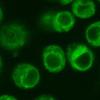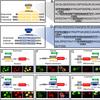DRSC-BTRR
2024
Mar
22
New cell lines & new understandings using cutting-edge techniques
2024
May
21
2024
Mar
06
2023
Jun
14
Light up your flies! Reagent and protocol information for application of our NanoTag system for epitope tagging in Drosophila
2023
Feb
24
2023
Feb
17
. 8/12/2022. “NURF301 contributes to gypsy chromatin insulator-mediated nuclear organization.” Nucleic Acids Res, 50, 14, Pp. 7906-7924.Abstract
. 2022. “CRISPR screens in Drosophila cells identify Vsg as a Tc toxin receptor.” Nature, 610, 7931, Pp. 349-355.Abstract
. 2022. “A genome-wide CRISPR screen identifies DPM1 as a modifier of DPAGT1 deficiency and ER stress.” PLoS Genet, 18, 9, Pp. e1010430.Abstract
. 2022. “Identification of two pathways mediating protein targeting from ER to lipid droplets.” Nature Cell Biol. Publisher's VersionAbstract
2023
Mar
01


